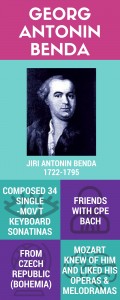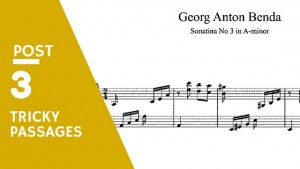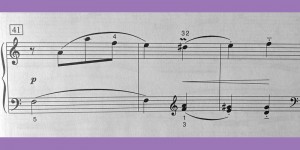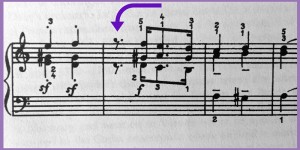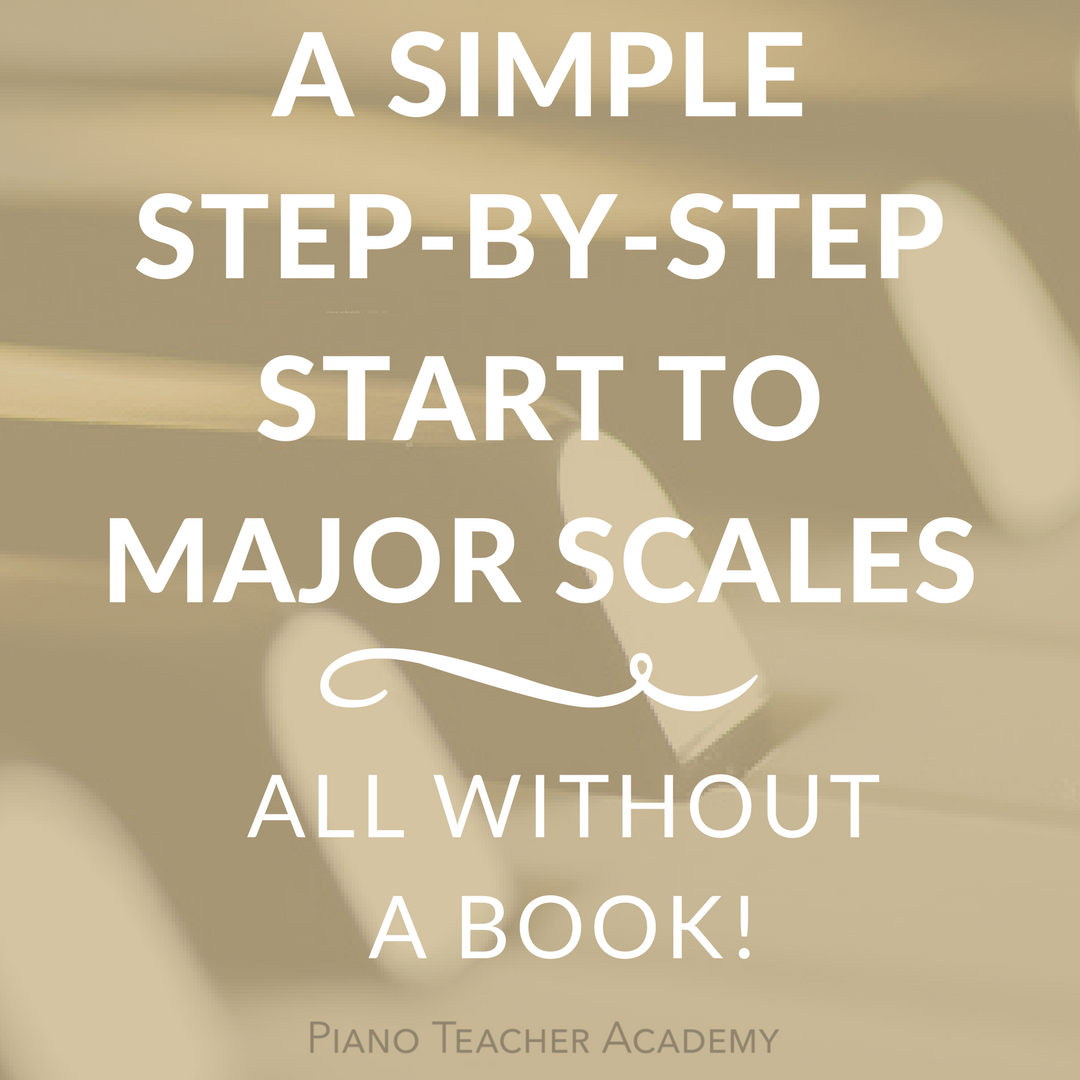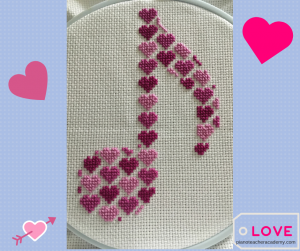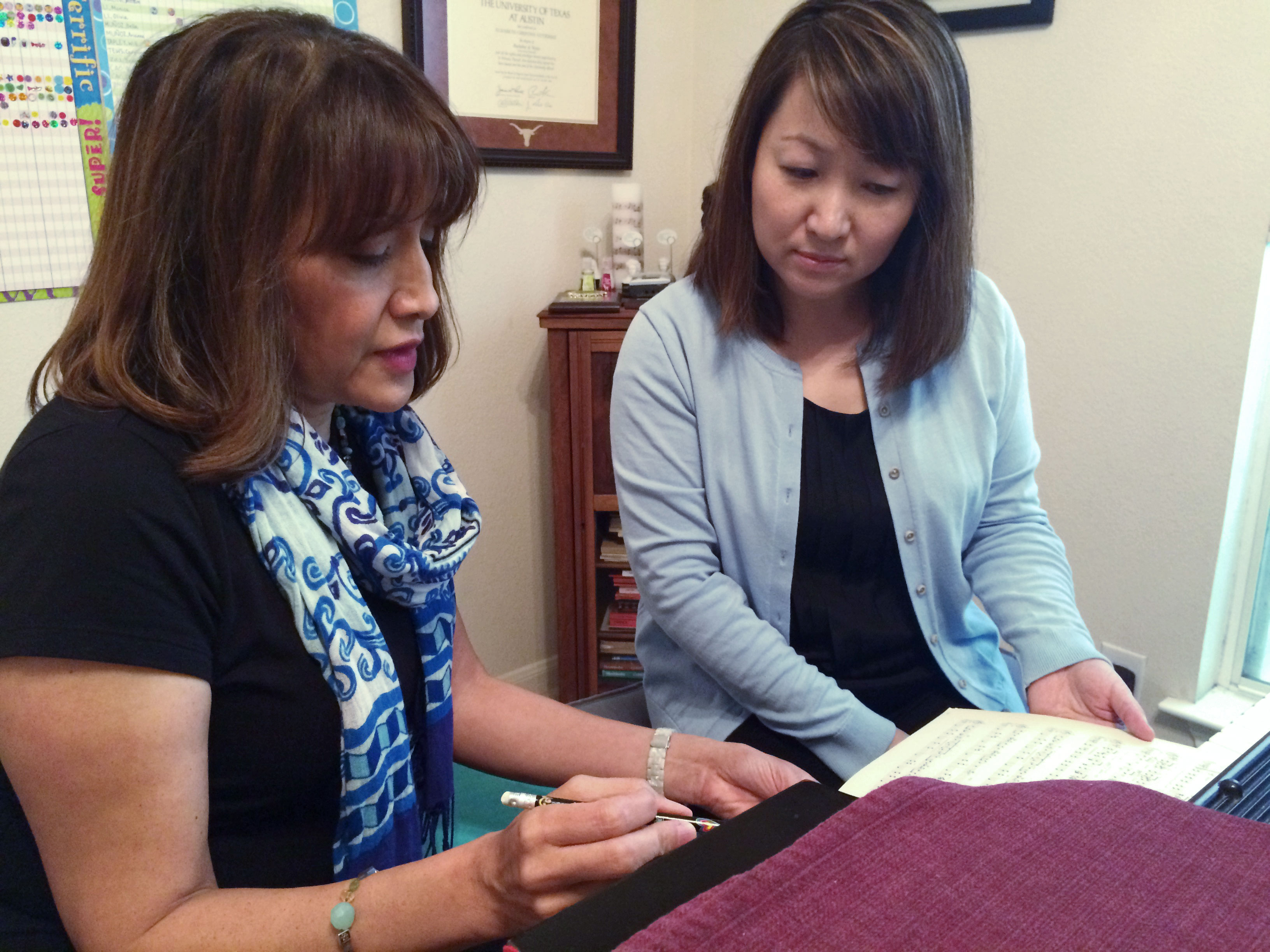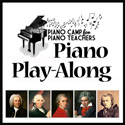Benda’s “Sonatina in A minor” Piano Play-Along: Post Four (Take-Aways)

Hope you all enjoyed the Benda A Minor Sonatina Play-Along. Even if you weren’t able to stay on schedule while it was happening, the beauty of a Play-Along is that you can jump in anytime even after the scheduled Play-Along has ended. Make any Piano Play-Along our own self-guided project to learn a new piece and gain a little more insight about it. But remember Play-Alongs are community projects also. I want to hear your thoughts about the pieces whenever you “play-along”. So….. practice a little, read a blog post along the way for insight, maybe make a comment on your findings, practice a little again, read another blog post, comment, etc.
I’m still hearing from folks who are reading along with the Kabalevsky Play-Along from last year. I enjoy reading the comments and returning to the score to investigate someone else’s finding or suggestions. 🙂
My take-aways from the Benda Play-Along:
- This is a deservedly-popular and beloved piece for student pianists because of its engaging musical characteristics. It offers tuneful melodies, dramatic harmonies, and finger-tickling toccata-style goodness with every measure.
- The fact that it’s short, yet full of interesting twists and turns makes it appealing to students and its show-stopper quality is appealing to audiences as well. Makes you wish there was more of it once it’s over.
- Excellent study in rhythm and part-writing for an aspiring intermediate pianist and offers opportunity to explore a good range of the keyboard.
The student will have to count like a fiend and absorb many details in articulation, but the pay-off is worth it. - I find that students continue to play this piece on their own even long after they’ve completed it. That’s a good sign of a mesmerizing piece…..
- Studying the Supraphon edition at imslp.org was quite revealing. It was surprising to see how over-edited this piece has become through the years and how inaccuracies have prevailed in student editions.
- I think a NEW student edition is in order, one that reflects Benda’s first edition more accurately with added notes to students about pedaling, accurate distribution of the voices, repeats, etc.
I’m going to prepare a new student-friendly edition for the Piano Passport catalog, and include a short learning guide for mastery of the more difficult technical areas. How does that sound? More teachers and students should have quick access to this wonderful piece!
Please pipe in with your take-aways below…. would love to hear your thoughts.
Until next time!
